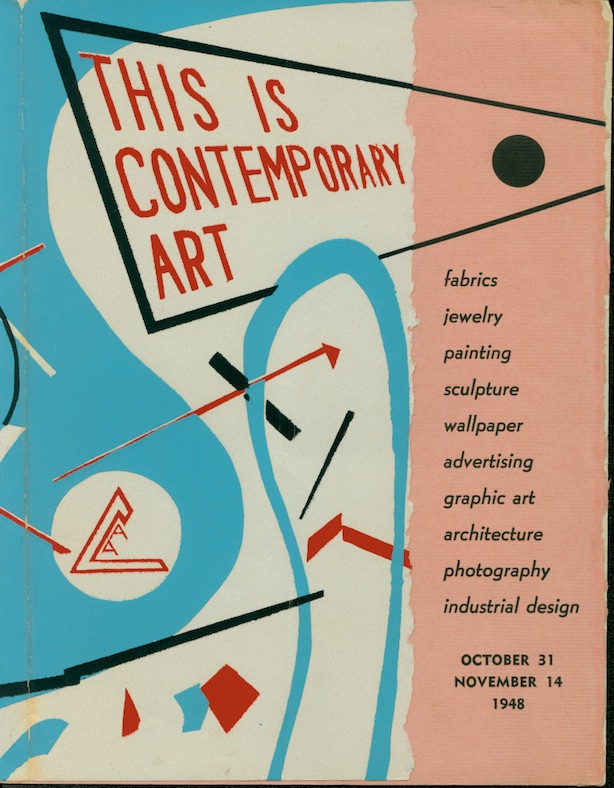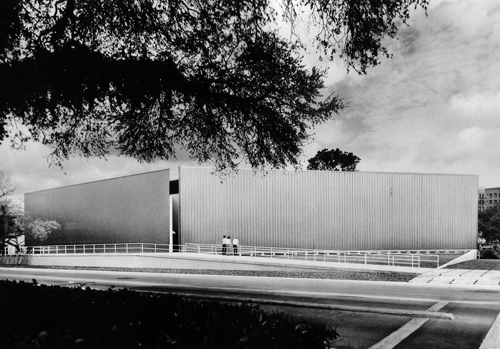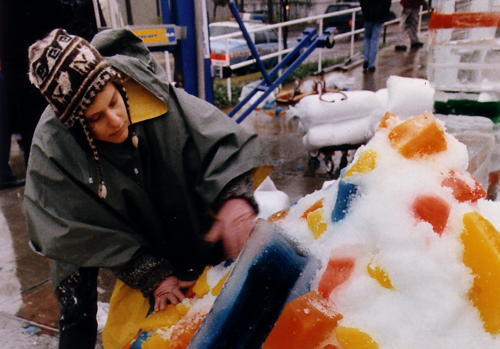History & Mission

In the beginning
1948
A group of six Houston citizens signed the charter and founded Contemporary Arts Museum Houston in 1948. This newly formed institution had a goal to present and document new art and its role in modern life through exhibitions, lectures, and other activities. The Museum’s history of exhibitions began with those presented at various sites throughout the city. For example, The Museum of Fine Arts, Houston held early exhibitions that included This is Contemporary Art and L. Moholy-Nagy: Memorial Exhibition.
1950–1960
The success of the institution’s early efforts led to the building of a small, professionally equipped facility in 1950. It was in CAMH’s first home that ambitious exhibitions of the work of Vincent van Gogh, Joan Miró, Alexander Calder, and Max Ernst were presented. In addition, exhibitions by artist John Biggers and his students from the then-fledgling Texas Negro College (now Texas Southern University) reflected Houston’s receptiveness to new ideas.
Jermayne MacAgy was hired as the Museum’s first professional director in 1955. Ms. MacAgy organized such definitive exhibitions as The Disquieting Muse: Surrealism, The Sphere of Mondrian, and Totems Not Taboo: Primitive Art. Ms. MacAgy also organized Mark Rothko, the artist’s second museum exhibition. The Museum’s dedication to thematic exhibitions, architecture and design, and surveys of individual artists continued throughout the 1960s. Landmark exhibitions included The Emerging Figure and Robert Rauschenberg which included the artist’s influential Combine paintings.
Expanded facility, expanded impact
1970–1980

The Museum’s programs and audiences had outgrown its facility by the middle of the 1970s. As a result, this led trustees to secure capital funds and a prominent site on the corner of Montrose and Bissonnet. In 1972 the new building, designed by Gunnar Birkerts, was built. The present facility opened with the controversial exhibition Ten, which featured several artists working in non-traditional media.
The Museum continued its commitment to showcasing the newest national and regional art throughout the 1970s. This commitment was on view in exhibitions including John Chamberlain, Dalé Gas (one of the first surveys of Hispanic artists in the U.S.), and a major thematic exhibition, American Narrative/Story Art 1967-1977. Exhibitions of new Texas talent additionally gave early recognition and encouragement to James Surls, John Alexander, and Luis Jiménez.
1980–1990
The Museum contributed vigorously to the emergence of Houston as one of the most significant cultural centers in the nation during the 1980s. From 1979 to 1984, the Museum grew rapidly. CAMH extended its reach with major exhibitions that presented and toured thematic exhibitions ranging from performance art to still-life painting during this time. In addition, the museum presented a number of one-person shows of nationally-known artists such as Ida Applebroog, Robert Morris, Pat Steir, Bill Viola, and Frank Stella. Exhibitions featuring important Texas artists were also a focus of the 1980s. Examples of such exhibitions included artists Earl Staley, Melissa Miller, and Vernon Fisher.
At the start of the decade, then-Director Linda L. Cathcart established Perspectives in the Museum’s lower gallery. Perspectives was a fast-paced series of medium-sized exhibitions focusing on cycles of work by emerging and well-known artists not previously shown in Houston. The series collectively mounted over 170 shows during its nearly forty-year run.
Continued growth
1990–2000

The Museum continued to sharpen its focus throughout the 1990s. CAMH began concentrating on art made within the past 40 years and extending its reach internationally.
As a result of this sharpened focus, many major one-person exhibitions developed. Such exhibitions included Tony Cragg: Sculpture 1975-1990 and Ann Hamilton: kaph. In addition, CAMH presented solo exhibitions such as Richard Long: Circles Cycles Mud Stone; Nic Nicosia: Real Pictures 1979-1999; Introjection: Tony Oursler 1976-1999; Lari Pittman; Robert Rauschenberg: A Retrospective; James Turrell: Spirit and Light; and William Wegman: Paintings and Drawings, Photographs and Videotapes.
CAMH closed for its first major facility renovation in 25 years on January 1, 1997. The Museum reopened to the public on May 10 that same year following a highly successful capital campaign. The first exhibition in the newly renovated space was Finders/Keepers. This landmark exhibition documented the institution’s relationship to the community, by borrowing back important works of art that had remained in the region after first being presented in CAMH exhibitions.
The new millennium
2000 – 2010
The Museum celebrated the new millennium with a look back. Reflecting on some of the most arresting and important installations of the previous decade, resulted in the exhibition Outbound: Passages from the 90s. Other thematic exhibitions of the new century have included Afterimage: Drawing Through Process; Subject Plural; and The Inward Eye. Additional one-person shows have focused on groundbreaking figures in all media such as Uta Barth; When One is Two: The Art of Alighiero e Boetti; William Kentridge; and Juan Muñoz.
CAMH presented several award-winning exhibitions in the first decade of the twenty-first century. Most noteworthy was Andrea Zittel: Critical Space, which was named “Best Architecture or Design Show” by the International Association of Art Critics/USA (AICA) in 2005-2006. Also, The Old, Weird America: Folk Themes in Contemporary Art, was awarded “Best Thematic Museum Show Nationally” by AICA in 2008. Cinema Remixed and Reloaded: Black Women Artists and the Moving Image since 1970 was nominated by AICA/USA in the “digital media, video, or film” category. Co-organized by Valerie Cassel Oliver and Dr. Andrea Barnwell-Brownlee, director of the Spelman College Museum of Fine Art, the exhibition featured the contributions of black women artists to the cinematic and visual arts arenas.

Recent history
2010–Present
CAMH began this decade with an award from AICA for “Best Show Involving Digital Media, Video, Film, or Performance” for the 2011 exhibition Stan VanDerBeek: The Culture Intercom. The exhibition, while co-organized with MIT List Visual Arts Center, was the first museum survey of the work of media art pioneer Stan VanDerBeek (1927-1984). Other major retrospective exhibitions included Benjamin Patterson: Born in the State of FLUX/us (2010), Donald Moffett: The Extravagant Vein (2011); Trenton Doyle Hancock: Skin and Bones, 20 Years of Drawing (2014); and Marilyn Minter: Pretty/Dirty (2015).
In 2012, CAMH, alongside Spelman College Museum of Fine Art, reprised their co-organized exhibition Cinema Remixed & Reloaded: Black Women Artists and the Moving Image since 1970 (2008) for inclusion in the 11th Havana Biennial in 2012. The exhibition marked the first presentation of a curatorial team from the United States as a participant in the main program of the Biennial.
CAMH celebrated its 65th anniversary in 2013 with Outside the Lines, a six-part exhibition series conceived as an evolving dialogue on contemporary abstraction. CAMH’s then-director Bill Arning and full curatorial staff—Valerie Cassel Oliver and Dean Daderko—each organized two exhibitions that were installed in two rounds in both the Brown Foundation and the Zilkha galleries. This exhibition was not only hugely successful, it also united the whole museum in one thematic exhibition for the first time. On the day of the opening—October 31, 2013—the city of Houston declaring it “Contemporary Arts Museum Houston Day.”
Moving contemporary forward
Contemporary Arts Museum Houston continues to look forward with exhibitions that exemplify the art of today. From German painters to South African videographers to Houston sculptors, the Museum is proud to show work by artists from many different cultures and backgrounds.
CAMH Mission

CAMH is accredited by the American Alliance of Museums, the highest national recognition achievable by an American museum. Alliance accreditation signifies excellence and accountability to the entire museum community, to governments and outside agencies and to the museum-going public.
